 April was such a busy month! Everything that was usually quarterly and staggered so that each quarterly happening doesn't fall within the same month--all fell on the same month: April. I'm still trying to catch my breath. Something I'm so glad I said "yes" to was the collaboration between The Room to Write, the non-profit that I founded and direct, and the Arts Collaborative of Wakefield, a local arts organization. So, in addition to all the quarterly things, TRtW also had a month of art programming to plan, get the word out about, and carry out. Artists and Writers featured together. Yay! I always say how nobody goes out to a gallery to look at 8x11 white pieces of paper with words on them, but this time they did because the pieces of writing were accompanied by colorful, unique art. The writing was also colorful and unique in its language and format, but it helps to have some eye candy to draw a reader into words on a wall.  One of the pairings can be found on the North of Boston Writers Network with the other twelve to follow. The first features one of the art exhibit coordinators, Andrea Willey, and my oldest daughter, Alice Getty. It was such a proud moment to see my teenage daughter step out of her comfort zone and agree to participate in a collaborative art exhibit featuring an original poem she wrote inspired by the art she saw.  There were so many other things that happened--regular programming at the Senior Centers--a great lineup ending with Stephen Puleo this afternoon--as well as two local author interviews at WCAT Studios and the usual critique group meetings: Multi-genre, Kid Lit and the Senior Group. There was a board meeting, a Writers and Illustrators Meet & Greet as well as six local authors visiting the art exhibit to read the books they authored aloud to kids and parents, there were exhibit evenings and afternoons and various discussions here, there and seemingly everywhere. More about that and photos can be found here:) May is usually very busy, but I think compared to April it may be calmer. I'm looking forward to that. After spending three and a half hours of one day this month trying to bunny-proof my back yard by blocking all entrances, I am looking forward to some uninterrupted garden time. And some Z-zz-z-z--z-z-z-z-z-zzzzzzzzzzz . . . 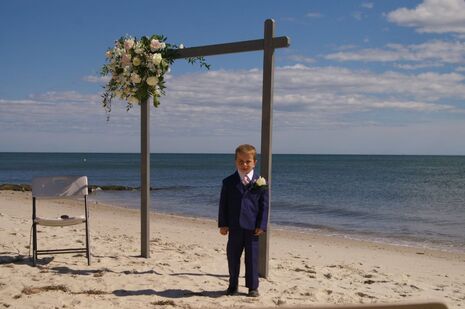 As part of The Room to Write's Senior and Veterans programming, we have writing days that are more casual and unstructured. We call those writing days: Gather & Write. It's a way to make time for writing during the week that is less structured. An instructor shows up and offers a writing prompt or two, or whatever, to the group--something to get the wheels turning and the pen writing. Being the only "poet" in the group has propelled me to utilize the time I am at the writing prompt helm to offer up something poetic. Not everybody in the group that gathers is necessarily interested in writing poetry--per se--but, really, poems are simply words that sometimes appear in a flowing sundress, sometimes in a polo shirt, and other times squeezed into a tuxedo and bowtie. For Valentine's Day, I decided to give the group a glimpse of a well-dressed poem. What form stood out to me as appropriate for the special day? The Sonnet, of course. When you think Sonnet, you often think Shakespeare. That might make you nervous, but it shouldn't. Shakespeare was in love with words. That's it. Sometimes passion can cause a person to get carried away, and so that is all that was--a man who got carried away with words. He was truly in love with words and so am I. Now, do I sit at home crafting sonnets all day or even once a week? No. 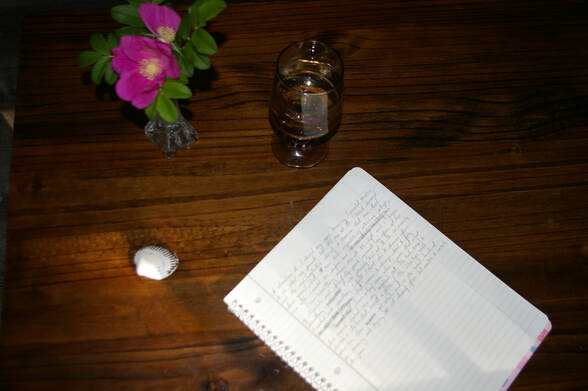 I am more of a free-verse poet, but I do enjoy a challenge every now and then. Think of a sonnet as a word puzzle. Puzzles aren't always meant to be easy. They are meant to get your mind churning and working until: voila! You have solved it--or you come close to solving it. There is a satisfaction in that. Sonnets can be wonderful exercise for our brains! I printed out some background, information and examples of the sonnet using a very helpful website, which you can access at: https://www.poetryfoundation.org/learn/glossary-terms/sonnet Keeping with the clothing theme, I told participants to think of a sonnet as a Corsette. Sonnets are a very tight poetic format. There are rules--strict ones. The sonnet forces you in place. It can be painful, but we persevered. You know what? Some participants actually enjoyed it. Others scoffed and at least one or two outright refused to conform to the format, which is perfectly fine. Still many surprised themselves with what they produced. I was one of them. Having been the person to force this poetic form upon the group, I was stumped when it came to sitting and writing until I simply decided to write about having to write a sonnet itself and the difficulty it posed for me. Give it a try! Who knows--you may just find yourself despising it and then enjoying it:)
Here is the sonnet I produced that day using the ABABCDCDEFEFGG rhyme scheme: The Sonnet Structure Thinking outside the box can be so hard especially when the box is not square but instead a stretching, boundless vast yard where we normally wander anywhere. And so, I sit and struggle with this form a torment brought upon by my own hand. My mind is like a literary storm. My thoughts forced into sonnet cannot stand. Sonnet poetry, why do you exist, forcing me to count like a little kid? Out from under your thumb I turn and twist. I didn't think I'd like this, but--I did. A glutton for puzzles and punishment, for literary suffering--I'm meant!  I just did something for myself. Well--not counting the KitKat bar I just asked my second born for. She obliged willingly taking it out of her sibling's bag. I shouldn't have accepted or condoned or whatever crime it was to allow my second born to take a chocolate from one of the other born's bag for my own craving--but it's Friday, so I did. Anyway, that was not what I did for myself. What I just did was participate in a poetry workshop. On Zoom, which I'm a bit sick of . . . but it was free, and I needed something. Like the KitKat, but for my creative spirit. I needed somebody to feed me creatively and force me to produce something creative. The workshop was sponsored by International Women's Writing Guild (IWWG) and facilitated by Warrior Poet Kai Coggin. She'll be offering a poetry intensive workshop if you are looking to get creative. Find out about that here. Here is the poem the workshop helped me produce. It's a draft--as everything is:) Joy ----- She sat there in our ordinary kitchen. My cup of tea, still hot, perfectly sweet and splash of milk. Ordinary black. Stringless bag. Sinking. Steeping. She sat there circling us--taunting knowing she wouldn't stay. She couldn't -- -- wear out her welcome -- be taken for granted. Expected. Sitting there--as if always. In our kitchen every ordinary, sleepy Saturday. Tea and talk, dancing. So simple until she slipped away to another kitchen, somebody else's unassuming moment. 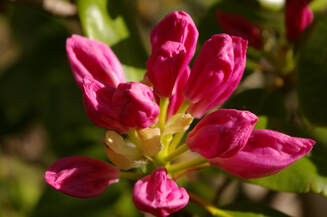 The world is opening up slowly but surely. Hopefully it follows spring's lead and petal by petal it stretches into a bloom so that we can enjoy life more fully. Imagine if flowers stayed buds forever? What a tease. What disappointment. The Massachusetts State Poetry Society had a meeting this past weekend. It was in-person at the Beverly Public Library, and it has been a while since I have attended any workshop or gathering in-person for the sake of being creative--even if only in bite-sized pieces. Poetry is sort of famous for being bite-sized, so this was a good start.  Poetry also has a habit of being famously impenetrable or snobbish. But, like so many things in life, if you can push past your own preconceived notions about poetry you'll see it's just words like everything else. It's a magnifying glass for emotion and feeling. It tries to get right to the point. Its love for the heart of the matter can be seen as obstinate at times. 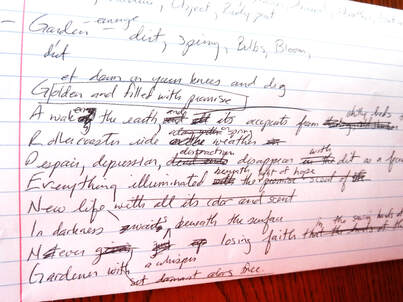 This is where this weekend's workshop on Acrostic Poetry comes in. Acrostic Poetry is quite possibly the perfect ambassador between people and poetry. It provides the suggestion of structure but does not slap you across the knuckles with its rules as some forms have a habit of doing. It simply provides a very entry-level chain link fence where you can see outside, but you are asked to play within its boundaries. What you play is up to you. Some may see the fence and find it, well--offensive (pardon the wordplay:). It seems too elementary. In fact, you may remember writing an acrostic poem in elementary school. What an insult to your intelligence, because while you may not be up for the snobbery of a Shakespearean Sonnet, you will not be subjected to the ABCs of an Acrostic! Pfft!! Well, I must admit to you, my attitude was quite the same. It had been years--decades--since I'd laid eyes, let alone my own pen, onto an acrostic poem. And yet, I played along. I was brought over to the fenced in area. The rules were simple and clear--refreshingly so. So, I played. And . . . 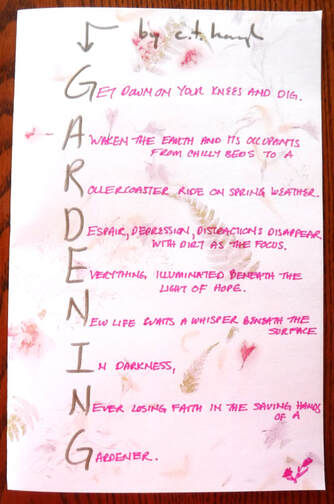 I absolutely loved it. Simple enough for my overwhelmed mind to participate and yet once I allowed myself to forget about the world beyond the fence, I felt safe and had some fun with words. I didn't drone on as I tend to do with prose. I picked and plucked and tried to put together a bouquet. Rearranging, crossing out, rewriting. It has been so long since I'd allowed myself to work at a poem that wasn't simply "freestyle." The "rules" offered just enough challenge without making the exercise daunting or frustrating. So, I encourage you. I implore you: write an Acrostic Poem. Here's a link to get you started: Acrostic Poem Many thanks to Jeanette Maes, President of the Massachusetts State Poetry Society, who facilitated the workshop this past weekend. The poem I wrote is titled "Gardening" and it could do with some reworking, but I'll include it as it stands currently. It felt good to take a snapshot of thought and force it onto paper. There is a satisfaction in creating that we cannot, as humans, dismiss or constantly defer. I'm glad I shook myself from default to get my hot mess of a self into the car and to that meeting so I could start to remember why I love poetry and words as a medium, so very much. 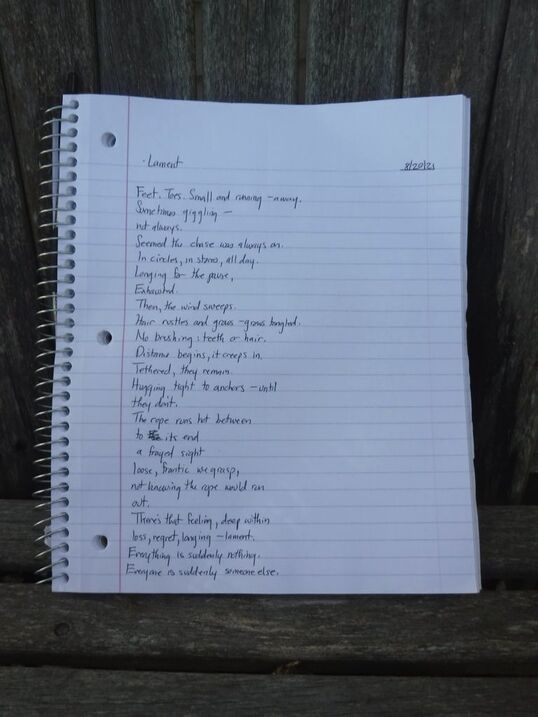 This past year has taken a lot from so many. Most of the loss has been obvious--tragic, tangible. Other losses have been more like the heat out of a drafty window--largely unnoticed until one is alone in a room and the chill is highlighted by the absence of distraction. In some of the quiet calm of this summer's vacation days I felt myself feeling the loss of a year and a half of childhood for every child in the world--and more personally my own. No matter how fortunate, innocence was lost this past year along with the care-free nature that is the hallmark of youth. It is as if my vision was so blurred by all that has transpired, I now look up to discover I missed some of the tailwinds of childhood as they swept by. My children continued to grow though time seemed to stand still for so many of us. They have grown in so many ways! This poem helped funnel those feelings through and out. There is so much we have not yet processed and that only quiet, contemplative time can yield. There is much to lament and it is important that we all allow ourselves the time and space to do so. It's a healthy, albeit unpleasant and often awkward, part of the natural grieving process. 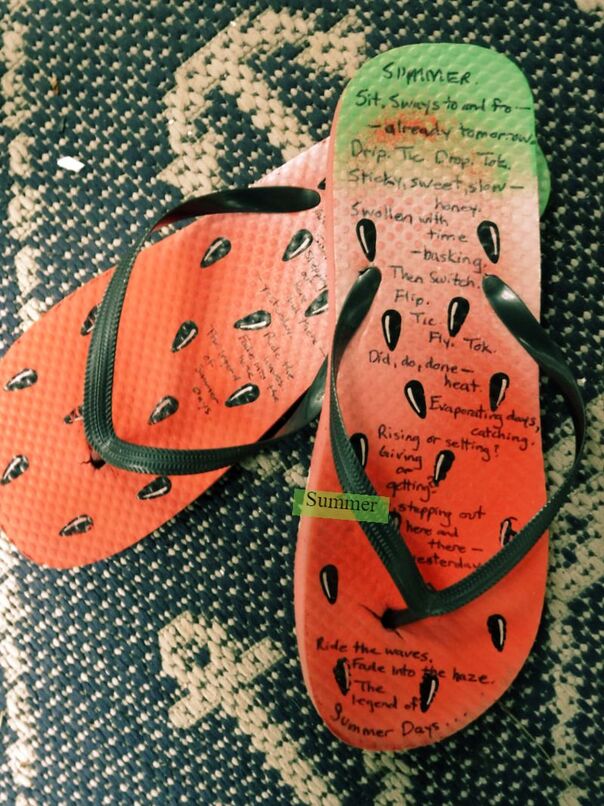 Summer. Sit. Sways to and fro -- already tomorrow. Drip. Tic. Drop. Tok. Sticky, sweet, slow -- honey. Swollen with time -- basking. Then switch. Flip. Tic. Fly. Tok. Did, do, done -- heat. Evaporating days, catching. Rising or setting? Giving or getting? Summer, stepping out here and there -- yesterday. Ride the waves. Fade into the haze. The legend of Summer Days . . . 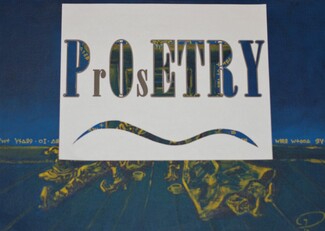 Just when a person thinks she has, perhaps, created something--invented a thing--one internet search proves that she is not so original after all. But, ignoring the fact that the "word," Prosetry, already exists and that there are some scattered definitions of what it is supposed to mean or represent, I present to you my intention of the word. PrOsETRY: a genre that mixes the use of Prose and Poetry for the length of the novel. Recently I finished my latest whole-manuscript revision of my Young Adult Contemporary Coming-of-age novel complete at approximately 63,000 words. It is a milestone for me having written the first draft at the beginning of 2018, revised that draft aloud, sent it through my critique group, queried, received feedback, decided to change the point of view of the narrative from 3rd person to 1st person, made that change and then embarked on this latest pass through which took several months. This latest revision was a word-by-word, read through out loud in my basement (my husband is working from home still, but luckily my kids are in school part of the day). It involved major rewording and of course the disbelief that I thought it was good enough to send out previously. So--now for the part where prosetry is invented! In a one-on-one critique I was fortunate to participate in through NESCBWI's 2020 conference, agent Alex Slater's last piece of advice on his critique form was: "-Think about the power of the 'white space.'" So, though at first I was busy with homeschooling during a pandemic and other such things leaving little time to "think," when I made it to September I finally had time to focus and think. That's when the long task of reading my manuscript out loud and making serious revisions began. This time, though, I thought about the power of the white space which gave birth to PrOsETRY: a mix of Prose and Poetry. After all, this novel has poetry running through its veins. It makes perfect sense in this case! Considering the appeal of Graphic Novels, which is simply a long form of a comic book that combines narrative and illustration, there's no reason why a book has to be all prose (standard fiction) or all poetry (novel in verse). Why can't we blend both and create another hybrid--something like a graphic novel? Instead of visual illustrations to pair with the narration, poetic form is sprinkled along the length of the novel in a way that illuminates (perhaps illustrates) the narrative prose. So, that is the genre of my YA novel: prosetry. It is not all straight prose in paragraph format, nor is it a full-length novel in verse only. It is a novel where prose and poetry dance together the entire time and allow the white space to exert its power where the reader would benefit from slowing down, soaking in what is being said or seeing a scene more visually--like an illustration would invite a reader to do. So, I don't care what the internet claims already has been invented. This feels like is a fresh new genre format that is something writers and readers will embrace--celebrate even! It feels like the writer's answer to graphic novel form and I have to say--as someone who has just written a whole novel in the form--it feels so liberating to dance along the page as I see fit. Prosetry is the perfect rhythm for a young adult novel to dance to. 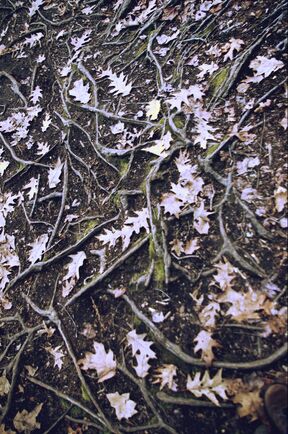 Confusion: Dark, orange cloud of chaos. Self-interested ignorance. Juxtaposed to-- Confusion: Invisible, deadly cloud of coronavirus. Generously shared. One powerful man, plus one powerful virus, equals two-fold tragedy. Much-coveted cooperation—wasted on Death. Life, liberty, love-- Quarantined. Destruction, disease, depression-- Wandering. Only tears to make stone soup, The stone sits and sinks—stews waiting . . . but nothing is added doors remain locked, neighbors silent. The bell’s toll proclaims profound need. Ingredients hoarded, people hide behind the invisible cape of their keyboards, flying and fighting. Heroes of the ether—online, in their own minds. Alone (in disguise) in reality. But—reality is a memory, Folklore, near-forgotten fable. 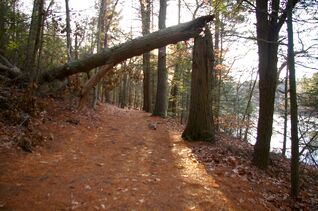 Confusion has replaced community. Confusion has erased common sense. Confusion is a blinding light —intentional tactic —manifestation of evil allowed to slither up and around—engulfing. While we —too distracted —too stressed —too much —too tired —too lazy to speak or act or care—out loud and in person. Surrendering to be swallowed, spit out . . . swallowed again. Shuffling from one display of drama to the next, fearing the silence more than anything. Resisting the feelings we ignore denying reality at all costs—at every opportunity, after each tragedy. We let the mind work its magic: Memories disappear. Hard edges soften. Lessons dissolve unlearned, unintentional, unimportant. Leaving the cycle to start again: same bed prepared, toxic seeds sown, take root and grow-- into more monsters, more mayhem, more of-- The Same. Cue: Confusion. That menacing character continues to reinvent and take control, while we revert to our time-honored history of hypocrisy and our beloved bevy of distractions (they salivate and wait patiently). |
Archives
May 2024
Categories
All
|















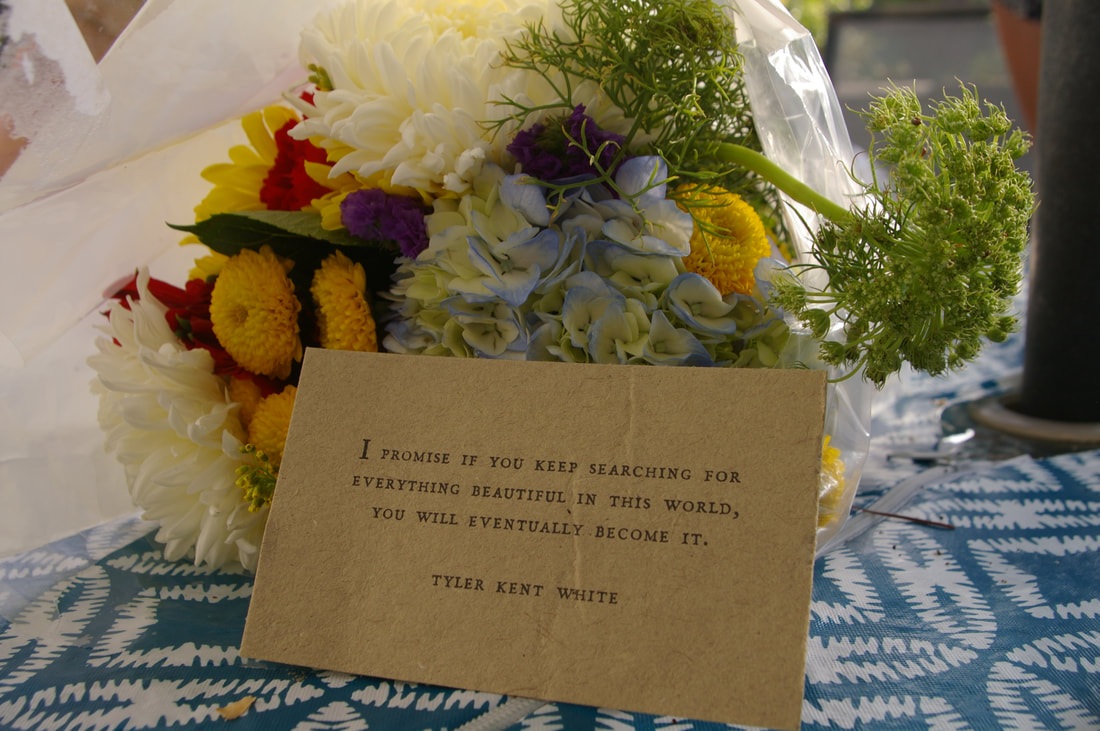
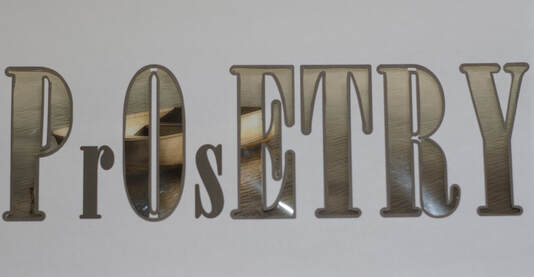
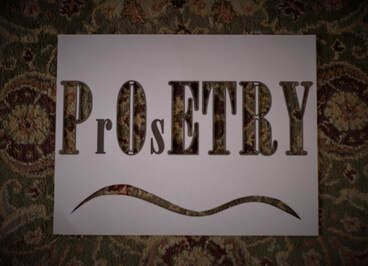

 RSS Feed
RSS Feed
